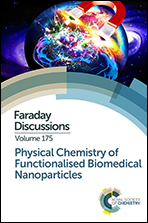The essential synergy of MD simulation and NMR in understanding amorphous drug forms
IF 3.3
3区 化学
Q2 CHEMISTRY, PHYSICAL
引用次数: 0
Abstract
Molecular dynamics (MD) simulations and chemical shifts from machine learning are used to predict 15N, 13C and 1H chemical shifts for the amorphous form of the drug irbesartan. The molecules are observed to be highly dynamic well below the glass transition, and averaging over this dynamics is essential to understanding the observed NMR shifts. Predicted linewidths are consistently about 2 ppm narrower than observed experimentally, which is hypothesised to result from susceptibility effects. Previously observed differences in the 13C shifts associated with the two tetrazole tautomers can be rationalised in terms of differing conformational dynamics associated with the presence of intramolecular interaction in one tautomer. 1H shifts associated with hydrogen bonding can also be rationalised in terms of differing average frequencies of transient hydrogen bonding interactions.MD 模拟和 NMR 在理解无定形药物形态方面的重要协同作用
利用分子动力学(MD)模拟和机器学习的化学位移预测药物厄贝沙坦无定形形式的 15N、13C 和 1H 化学位移。观察到分子在玻璃化转变以下具有很高的动态性,对这种动态进行平均对于理解观察到的 NMR 移位至关重要。预测的线宽始终比实验观察到的线宽窄约 2 ppm,假设这是电感效应造成的。之前观察到的与两种四氮唑同系物有关的 13C 移位差异,可以从与一种同系物中存在分子内相互作用有关的不同构象动力学角度来解释。与氢键有关的 1H 移动也可以从瞬时氢键相互作用的平均频率不同的角度来解释。
本文章由计算机程序翻译,如有差异,请以英文原文为准。
求助全文
约1分钟内获得全文
求助全文
来源期刊

Faraday Discussions
化学-物理化学
自引率
0.00%
发文量
259
期刊介绍:
Discussion summary and research papers from discussion meetings that focus on rapidly developing areas of physical chemistry and its interfaces
 求助内容:
求助内容: 应助结果提醒方式:
应助结果提醒方式:


